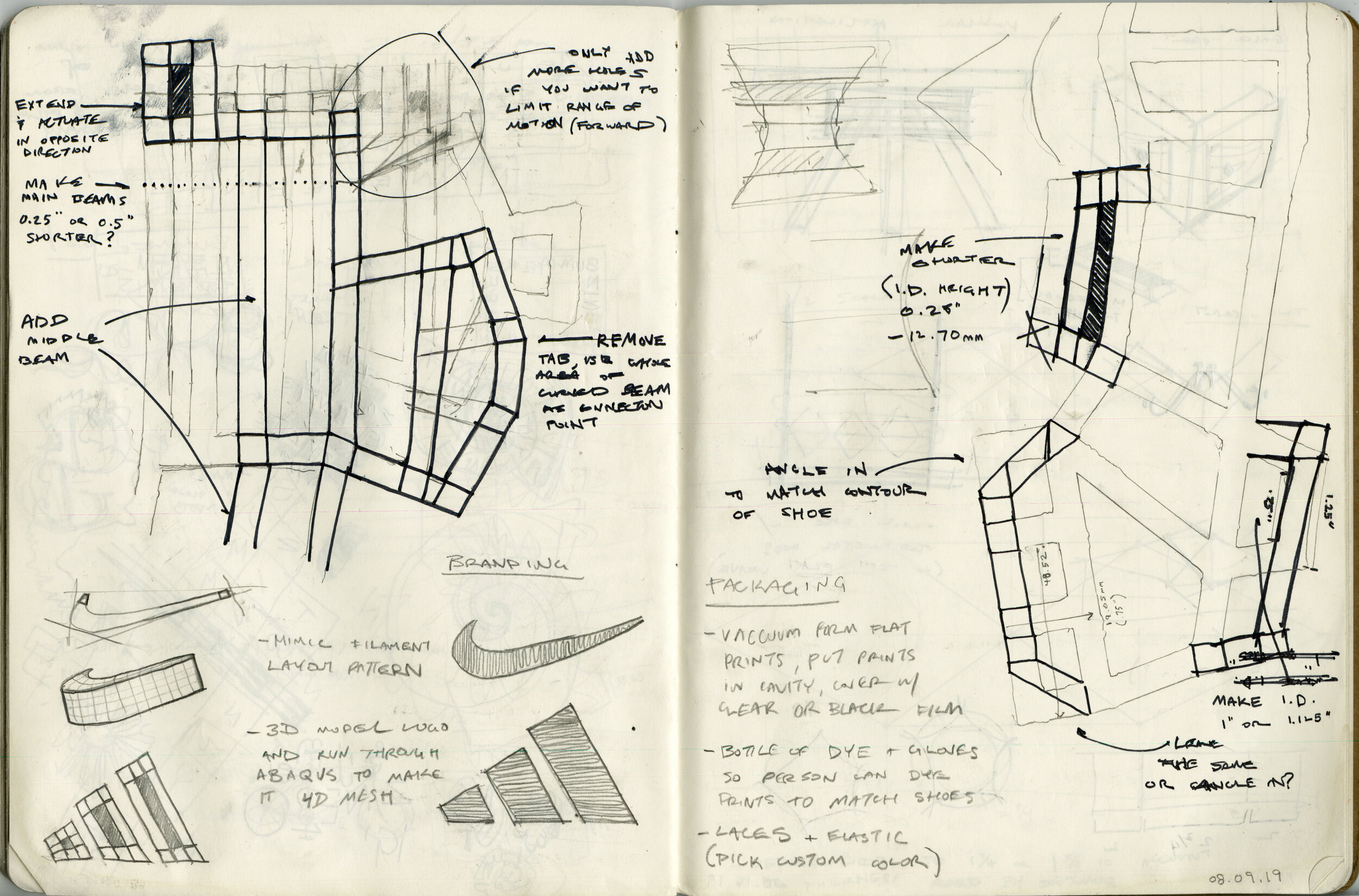Shoe Converter
This project addresses the concept of a universal product—one that can adapt to distinct users and contexts to fulfill various needs. The shoe converter is a propositional artifact aimed at giving users the ability to engage in personalized shoe augmentation for alternative, high-performance contexts such as hiking or climbing.
This project was also an opportunity for me to learn and experiment with a novel prototyping method: 4D printing. In this process, line drawings are made in CAD, 3D printed as flat parts, and then are submerged in hot water and morph into predetermined shapes.
Initial Concept
The idea for this project came after a hike in a nearby state park, as I wished I had had hiking shoes to keep my ankle from rolling when I landed on uneven surfaces. It came too from my desire to limit the number of shoes I only have for infrequent, specific activities. I began with some concept sketches of a shoe-supporting framework.
Concept Development
The next step was to gain a better understanding of the foot and how it moves. My approach was to make casts of my foot in different positions of movement.
Next, I translated the lines I had traced on the casts (denoting potential placement of beams) onto paper.
I then assigned a more rigid structure to the lines, as a way of determining where beams would be placed.
Next, I worked on determining where the actuators—the embedded stress in the print that causes it to morph—would be placed.
This was the resultant template for my shoe converter. I decided to use separated shoe and ankle components with places to connect elastics and fasteners. This approach made for a more successful fabrication process and better customizability.
Finally, after placing the templates around my ankle and shoes, I responded with some adjustments to the design. These mostly involved making the connection points more versatile or less limiting to the motion of the wearer.
Fabrication Process
The pipeline for this material involved drafting 2D drawings of the parts, assigning actuators to each beam, and then simulating the shape change before printing.
The first step was to build a framework for my drawing of intersecting geometries using dimensions from my paper template.
I then traced over the framework to get the essential beams I wanted to fabricate, and mirrored these along the center axis.
The software plugin assigns numbers to each beam and intersection point between them.
This allowed me to select each beam by number and decide how much I wanted each to bend, and in what direction.
Once the actuators are assigned, a simulation file is generated.
The model post-simulation is an incredibly accurate depiction of what the form will look like after morphing into its final shape. I chose to have it close up a bit more than needed to allow for a snug fit onto the shoe.
Finally, the parts are printed on a 3D printer.
The initial prints of the design were done in PLA filament, but for the next iteration we went with a blend of carbon fiber and PLA filaments, for added strength without totally sacrificing flexibility.
This is the activation phase, where the part morphs into shape. The piece is suspended in hot water for several minutes as it changes shape.
The last step of the fabrication process was to mold the print to the surface of the shoe. The morphing process got the print close to the ideal shape, but this sculpting process allows the user to customize the prints to their specific shoe and ankle shape.
Current Iteration
The current iteration is a proof of concept illustrating the structure and intent of the Shoe Converter parts. The elastic, suspended laces, and fasteners would benefit from more consideration into accessibility, durability, and ease of use.
Next Steps
Moving forward, I’m interested in exploring how to make the fasteners easier to use, and the motion-limiting features such as the elastic bands more effective. I also want to explore new methods for joining the morphed pieces to the shoe such that they stay in place better during peak activity. Both of these opportunities could be addressed through use of textiles and different types of fasteners in combination with the 4D-printed elements.


